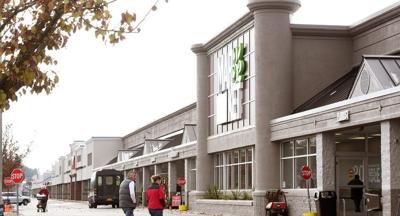Online grocery shopping, first introduced to the U.S. in the late 1980s, was slow to build a following among consumers who readily turned to the internet to order books, electronics, clothing and shoes. Until, that is, COVID-19 struck.
Then, whether for practical reasons (stay-at-home mandates) or health and safety concerns (before wide vaccine availability), online grocery shopping skyrocketed.
In 2022, the Adobe Digital Economy Index christened groceries “a major category online” after spending surged in 2020 — the year the pandemic started — to take a 9.1% share of e-commerce overall. Similar shares followed in 2021 and 2022.
Last year, says a new report from supermarket consultant Brick Meets Click, e-grocery sales were down slightly from the results tracked in 2022, primarily due to a decline in order frequency.
Still, e-grocery sales finished at $95.8 billion in 2023, according to the suburban Chicago firm, which reports monthly on online grocery spending using shopper surveys and other data.
Within online orders, sales are grouped by method of receipt: delivery to home by grocer or third-party vendor; pickup by consumer; and shipment by parcel carrier. For the past three years, pickup has been favored, with sales at more than half of 2023’s overall e-grocery sales. Close behind is delivery, with shipment a distant third, according to Brick Meets Click.
The report noted that, in addition to inflation continuing to weigh on consumers and food retailers alike, online supermarket sales also were impacted by e-grocery efforts by mass merchants (think Target and Walmart) and hard discounters (Aldi). Customer cross-shopping rates among e-grocery providers also rose.
Both of the Capital Region’s dominant traditional grocers, Price Chopper/Market 32 and Hannaford, continue to make e-grocery investments.
Schenectady-based Price Chopper, now part of the larger Northeast Grocery Inc., which also includes Buffalo-founded Tops supermarkets, offers delivery in 123 stores and pickup in 109, says Mona Golub, vice president of communications and public affairs, meaning 95% of customers can use one or both online ordering options.
She said, while e-commerce sales have seen a slight drop year over year, “We attribute this more to economic factors and the additional costs associated with delivery,” as the pickup component continues to grow.
For 2024, there will be “ongoing effort” to improve the online customer experience, she said, including “looking to further integrate our stores’ catering options” into pickup.
At Hannaford, the Maine-based company started the year by dropping service fees associated with pickup orders of $125 or more, and added time slots for both pickup and delivery. That’s in addition to tweaks in technology last year that reduced wait times for pickup, said Mark Bradeen, director of e-commerce and digital marketing.
All of the grocer’s local stores offer Hannaford to Go, as the online options are known, with every New York store due to have the services by early next month.
“We have seen tremendous growth in our online performance,” Bradeen stated.









